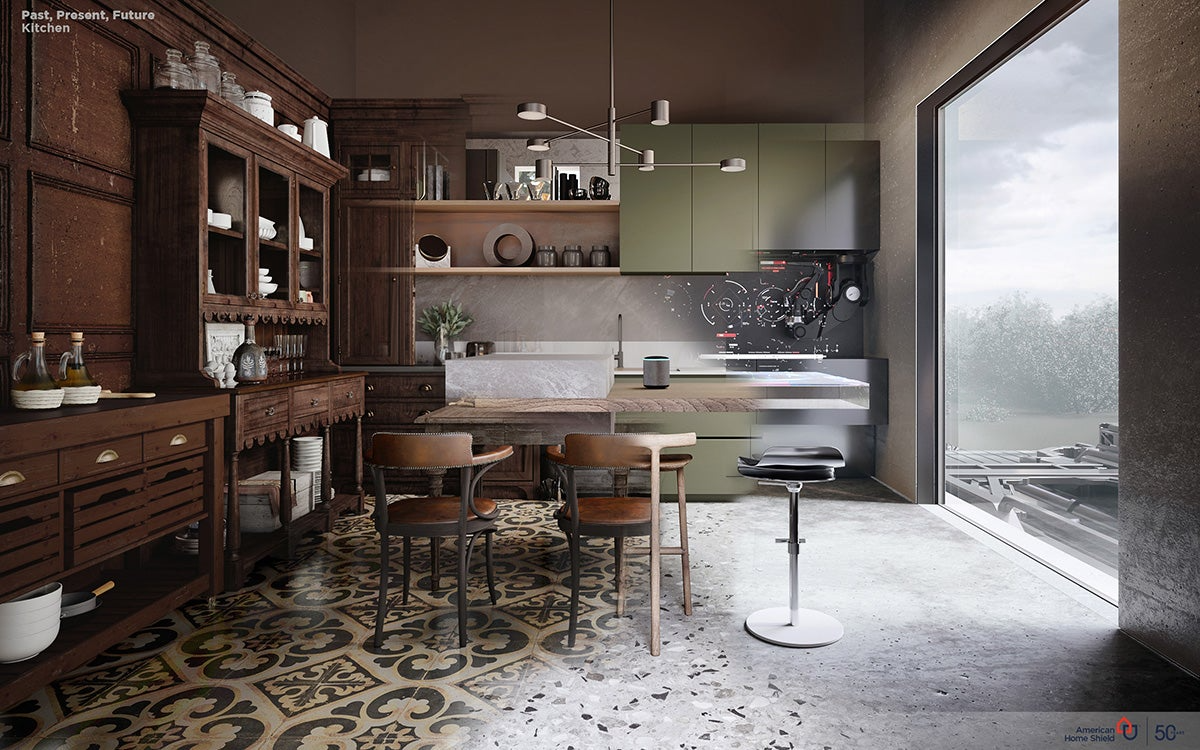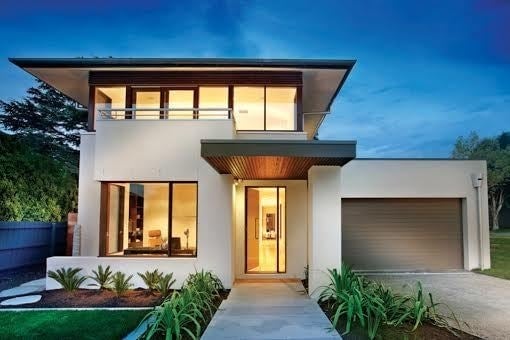The Past, Present and Future of Every Room in One Photo

The American home has changed dramatically over the years, but some things remain fundamental: the rooms we use, the reliability we need, the intimacy we desire.


The American home has changed dramatically over the years, but some things remain fundamental: the rooms we use, the reliability we need, the intimacy we desire.
With this in mind, home designers and technical innovators continue to push home interiors to even greater levels of style and sophistication. Your ancestors of 200 years ago would surely recognize your present home as a home – but would they know how to use the kitchen of the future? Will you?
For the last 50 years, American Home Shield has partnered with homeowners to deliver peace of mind. As the trusted ally for more than 1.8 million members across the nation, it’s their business to know what’s coming next in the home realm.
We’ve created a new set of images illustrating how the rooms of the American home looked in 1821, how they typically look in 2021, and what to expect in the decades to come.
Kitchen
The kitchen stove may seem like an ancient technology, but it was unknown before the 19th century. Prior to industrial revolution-era innovations, the temperature knob was non-existant. Americans cooked on open fires, controlling heat by raising or lowering the pot to the flames.
However, the modern temperature knob is just a temporary visitor to our homes. The stove of the future will be controlled by an AI ‘Bot Chef’ kitchen assistant with a robotic arm. You’ll look like Tom Cruise in Minority Report as you gesture at the digital dashboard in our future kitchen. Adjusting settings with a wave of your hand will save you from spreading mess from surface to surface.
Dining Room
The dining room was a formal affair in Victorian-era America. Colors were soothing, and you would eat by daylight or candlelight – which feels idealistic in an age of eating by the flickering light of the television. Our contemporary dining room design features repurposed school chairs that are light and convenient, reflecting how today’s dining room is rarely a place to linger after the last bite.
If you enjoy the new ritual of “dinner-party-by-Zoom,” you’ll love the option to invite holographic guests who live far away into your dining room of the future. Arranging projectors rather than chairs around the table is also a perfect compromise between the TV dinner and candlelight. Your friends will be both the entertainment and the light source.
Thinking about coverage?
Sounds like a plan. Find the warranty that fits you best.
Living Room
Do you remember ‘books’? Historically, the bookshelf has been a practical way for homeowners to store their (paper-based) home media while communicating a sense of identity to visitors. But modernism and the anti-clutter movement have hidden our books, DVDs, and other loose bits and bobs behind push door cabinets, giving our ‘present’ living room a calm, streamlined look.
However, today’s sleek storage solutions have been counteracted by unwieldy media players – from the stackable hi-fi to the stadium-sized widescreen. The living room of the future will virtualize much of this hi-tech clutter. Furniture will deflate when not needed. One central device will process and project your digital media needs. Your furniture itself will act as speakers, and 3D games and movies surround you, projected from this multilayered volumetric video screen (leaving more space in the living room to display your books.) Sounds a bit energy-intensive? Check out the solar energy panels on the balcony.
Bedroom
To some, the four-poster bed is a symbol of opulence. But in fact, the design was created to protect the sleeper from the cold (in cold countries) and insects (in warm countries). The four-poster appears in artwork from 300BCE or earlier, and Cleopatra had one. But they have fallen out of fashion in the west since the development of central heating.
Modernism begets minimalism, and the peaceful atmosphere of our present-day bedroom is down to the lack of clutter. In the future, there will be even less clutter when a media wall (disguised as wallpaper) replaces both the television and the mirror. You can model clothes virtually, without putting them on, and robot arms will fetch them from your wardrobe, saving space and hassle. And the bed is equipped with a sleep monitoring system to quantify your nighttime self, and even record your dreams.
Bathroom
Today we’re used to the seamless fitted bathroom, but traditionally bathroom furniture has been just that: furniture. Separate, wood-built pieces would stand freely in the bathroom, and even the water would be brought in manually, having been heated on the stove.
The contemporary bathroom is sleek, bold, and bright. But the media bathroom of the future can be adapted to match your mood. Relaxing, sensual, or invigorating animated presets will appear on the video walls. The multi-directional shower promotes water economy and your smart mirror includes a scanning system for body metrics - so you can check out your ‘vital signs’ while brushing your teeth.
While design trends and technology have changed over the years, the need for a plan when parts of your systems and appliances wear out has not. With American Home Shield home warranty plans, you’ll have the peace of mind to keep your home in working order – no matter when an unexpected issue arises or how complicated and intricate the appliances and the systems of the future might be.
AHS assumes no responsibility, and specifically disclaims all liability, for your use of any and all information contained herein.
Maintaining smart home security gadgets is made easy with an American Home Shield plan.

Have a plan for your home when things don't go according to plan
Shop Home Warranties